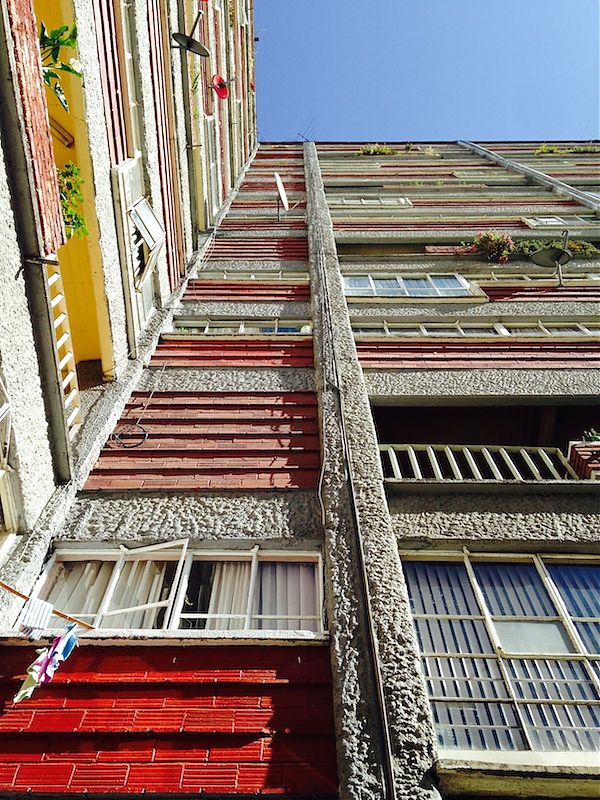Portfolio | Centro Urbano Presidente Aleman

Visiting two Barragan houses was a dream, but the Harvard Graduate School of Design studio with which I traveled to Mexico this spring was exploring different mechanisms for low-income housing. We looked at a number of examples of mass housing, the earliest being the Centro Urbano Presidente Aleman (known as CUPA, coo-pa), designed by Mario Pani and built in 1949. The complex includes six thirteen-story towers, zig-zags rather than slabs, as well as six three-story rectangular buildings and a variety of recreational buildings and open spaces. For those versed in modern architecture, the Corbusian precedents are obvious: bi-level apartments, outdoor streets in the sky, the combination of low- and high-rise, and the buildings a redent. Here are towers in the park, but in Mexico City the park (thanks to the climate) is lush and green, the flower boxes along those open passages are full, and the idea of a public sitting room thirteen stories up doesn’t seem like such a terrible prospect. The exterior language is inflected toward a Mexican vernacular, the concrete frame roughly textured, with infill panels of brick. In the strip windows overlooking the passages, one could see lace curtains and religious icons. As with so many early modernist developments, in Latin America as well as Europe, the complex’s longtime residents had made it their own.
By all accounts CUPA has been the rare stable example of such mass housing in the region; considered “gargantuan” when it was built to house 5000 people on land designated for 200 single-family houses, it now looks far more reasonable. Stable because residents have stayed by choice, stable because it survived the earthquake of 1985, which destroyed a number of the slabs at Pani’s later, more massive, more troubled Conjunto Urbano Nonoalco Tlatelolco. Justin McGuirk starts his new book, Radical Cities, in Tlatelolco, completed in 1964, and describes it thusly: “Tlatelolco took the modernist idea of social housing to its logical, many would say absurd, conclusion. If, in the mid twentieth century, the city of the future would comprise rows of megablocks sitting in parks and gardens, then the future looked like Tlatelolco.”
It was interesting to see the complex turned into a modern graphic, as at the laundromat on its first floor, as well as to see it remodeled, by one architect-in-residence, into a true representation of International Style decor, with a George Nelson clock and a Marimekko apron. The one complaint we heard on our (admittedly short) visit was that, at certain times of day, you couldn’t take the elevators: the unionized operators did not want to stagger their breaks. So we walked up the outdoor staircases. For more reading in English, there is Adam Kaasa’s Appearing In or Out of Time and the February 2003 A+U.









On X
Follow @LangeAlexandraOn Instagram
Featured articles
CityLab
New York Times
New Angle: Voice
Getting Curious with Jonathan Van Ness